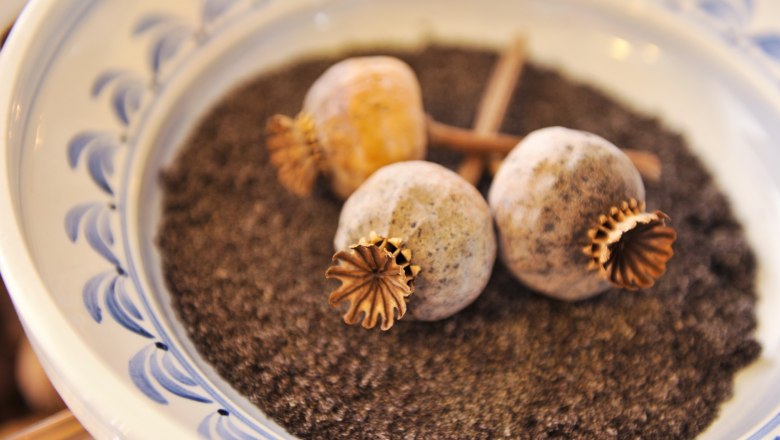Waldviertel poppy seeds
The “grey gold“of the Waldviertel
The climate in the Waldviertel is ideal for growing poppies and between 200 and 700 hectares are used for growing poppies here each year.
The history of the poppy goes back to the Stone Age. Grey poppy seeds from the Waldviertel were even dealt with on the London stock Exchange.
The grey poppy seeds from the Waldviertel carry the EU "protected designation of origin" (PDO). "Waldland", the well-known organic producer and retailer, has been coordinating the cultivation and marketing of grey poppy seeds grown in the Waldviertel for more than two decades.
The Waldviertel poppy seed oil produced in Ottenschlag is also well-known. The warm sunny days, cool nights and heavy dews play an important role in the high proportion of healthy unsaturated fatty acids to be found in this oil.
Mohndorf Armschlag (the “poppy village” of Armschlag)
Everything here, at the "poppy village" of Armschlag revolves around the poppy: the approx. 1 km poppy trail beside the "Große Krems" (river) provides a wealth of information about the history, production and culinary aspects of this plant. The “Mohnstrudel” (poppy seed strudel) trail starts at the “Mohnwirt” (poppy restaurant) and continues through the surrounding villages before returning to Armschlag. Allow 5 ½ hours for the complete trail. A large variety of poppies, including the yellow and white alpine poppy, the orange-yellow Icelandic poppy, the Oriental poppy with its dark purple and white flowers and the grey poppy of the Waldviertel, are on show in the demonstration fields and cottage gardens.
The "Mohnwirt Neuwiesinger" (poppy restaurant) specialises in a wide range of dishes using poppy seeds such as "Mohnzelten" (flat pastries filled with poppy seeds), cakes and gateaux, dumplings and noodles as well as fish cooked in a poppy seed crust.
The "Mohnkirtag" is a festival dedicated to the loved poppy. There you can taste and buy various of culinary specialities.
Further highlights: demonstration garden, farmers' shop, poppy museum

